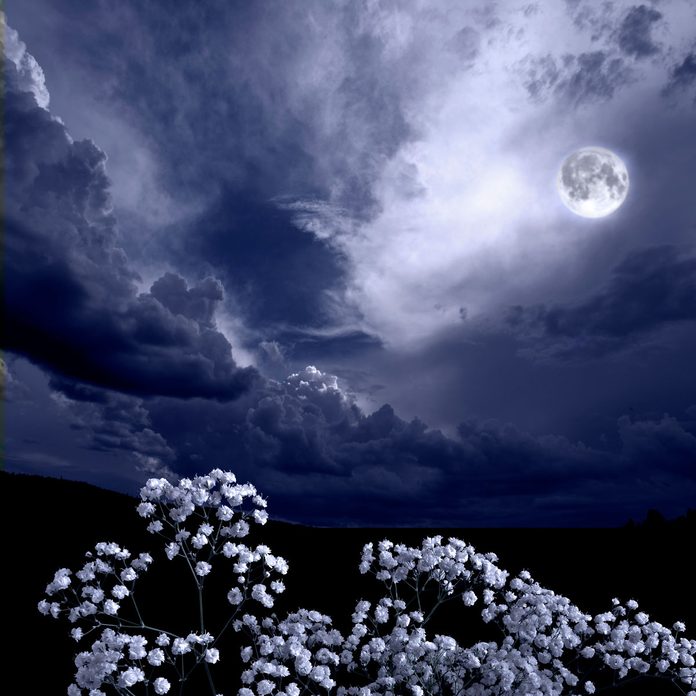
Moon Garden Marvel
A moon garden should consist of flowers and plants designed to reflect moonlight but also remain visible and fragrant during an obscured or new moon. White flowers should occupy most of your plot, along with plants with silver and gray foliage. Other pale hues to consider include pink, yellow and lavender. Pictured is the perennial sneezewort which can be grown in USDA hardiness zones 3-9. This is a good flower to be planted in mass and will provide small white flowers all summer long.
The sooner you get the basics of your garden down, the quicker you will be reveling in it! Here is the how-to in 8 easy steps!
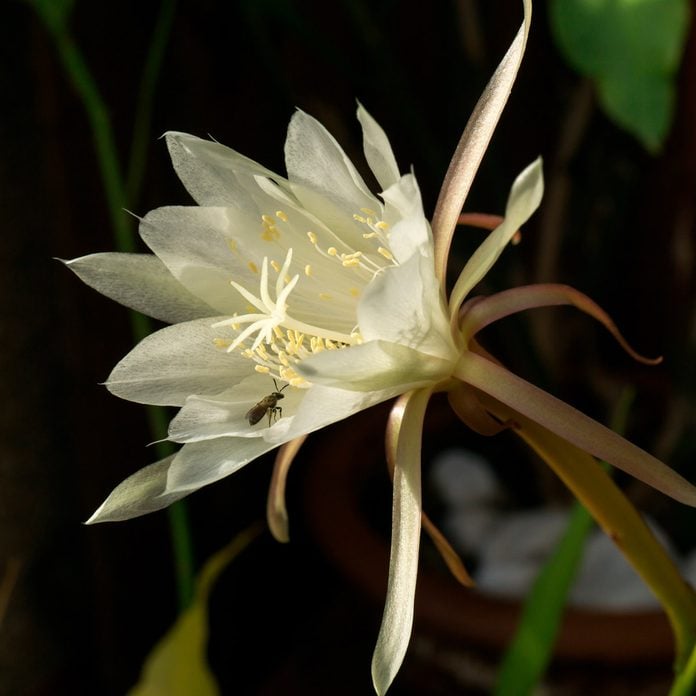
A Beacon in the Night
We often miss out on garden time during the day, but the scents and shine of a moon garden will not only feed your senses after dark but also attract pollinators like moths, native bees and bats. Shown here is Epiphyllum Oxypetalum “Queen of the Night” with a bee pollinating. This nocturnal, fragrant flower blooms at night and wilts the next day and can be grown in zones 10-12.
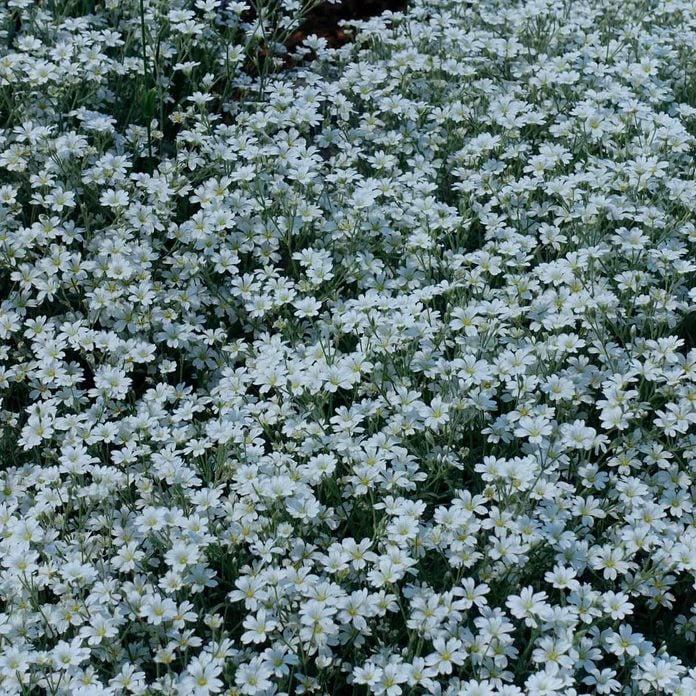
Welcome Snow in Summer
These low spreading perennials look great when planted in large swaths. Snow-in-Summer, or Cerastium Silver Carpet, create paths of flowers that will twinkle through the night. The silvery gray stems have a natural reflective aspect throughout the year while producing white star-shaped flowers from May through June, thriving in hardiness zones 3-7.
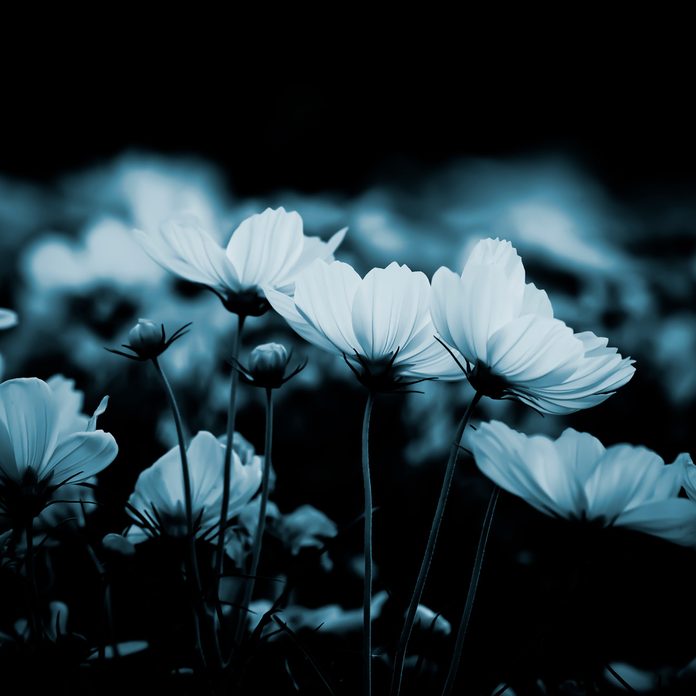
Backyard White Cosmos Reflect the Sky
The early- to late-summer blooming white cosmos show off their white blossoms and yellow base during the night. Cosmos are great flower for all climates as they grow in hardiness zones 2-11. These appropriately named beauties mirror the sky when reflecting the moonlight, and gleam on moonless nights.
Just behind your cupboard doors, secret ingredients lurk to spur the growth of your flowers. Check out this list of items (likely already on hand in your kitchen) to make your flowers sing.
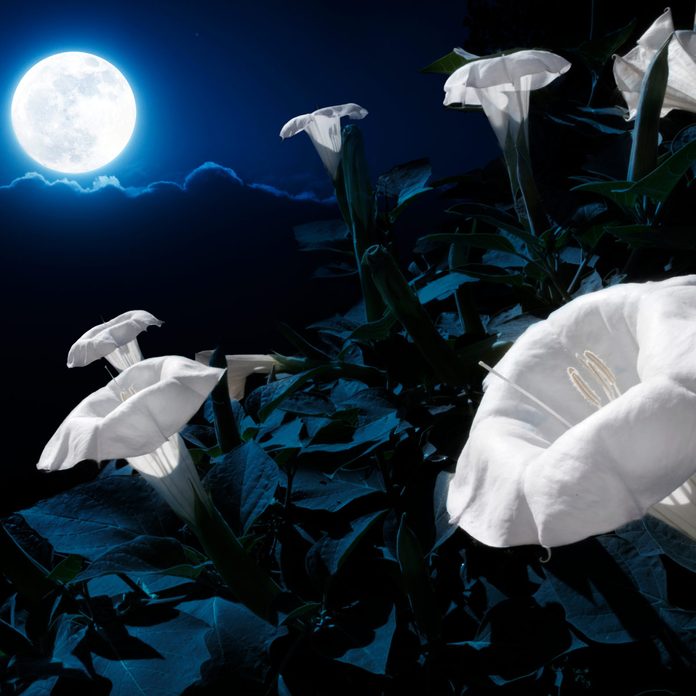
Moon Flower Fundamental
With their trumpet shape and lemony scent, moonflowers should hold a key place in your moon garden. Moonflowers are recommended for zones 9-11 but have flourished as an annual in northern zones. These majestic flowers grow on a vine and take flight mid-summer, unfurling in the dusk and staying open until dawn. The white petals of this aptly named moon flower attract moths as they glimmer in the night.
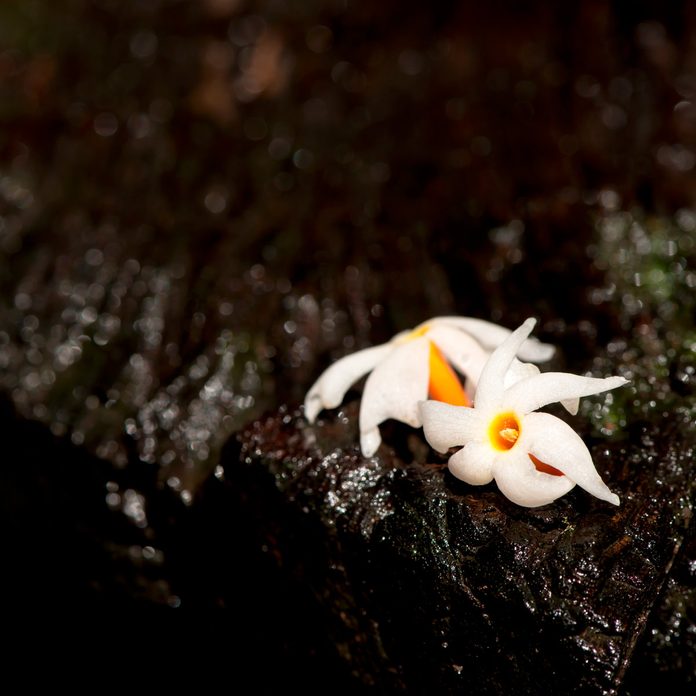
Night Blooming Jasmine Attracts All Comers
The aromas produced by most night blooming flowers are sweet. Plus, moon gardens contribute to the ecology of a backyard. Many of these nighttime flowers count on nocturnal insects for pollination. The night blooming jasmine is a pungent flower, delighting humans and attracting night flyers, typically from July through October, growing in hardiness zones 8 to 11.
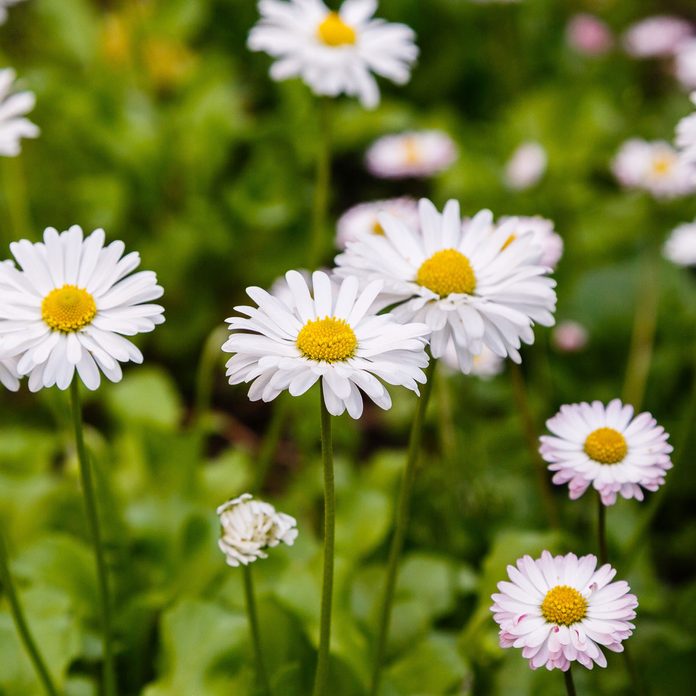
Fill in the Holes in your Plot
While not fragrant, Shasta Daisies or the silver princess, best grown in zones 4-9, are an accent plant for your moon garden. Fill in the gaps in your plot with this herbaceous perennial plant of consistent bloomers. They deliver white color all spring, summer and fall.
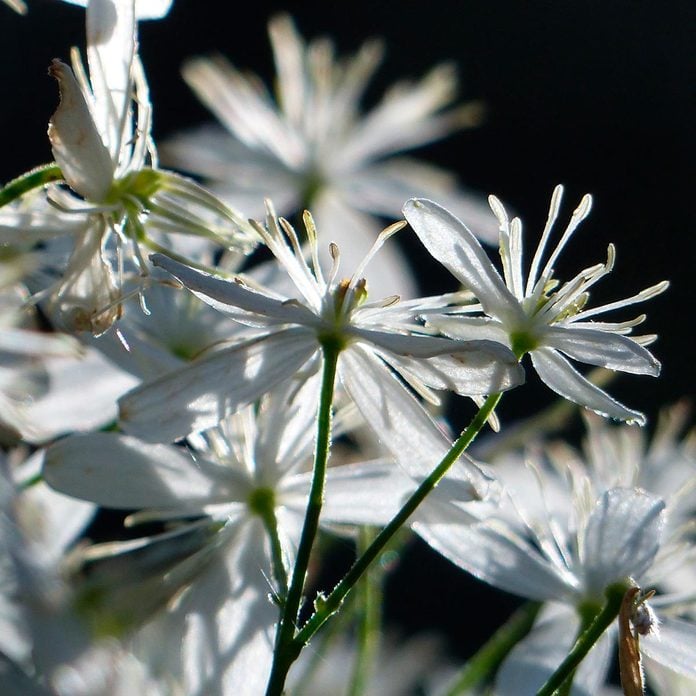
Fall Effervescence
As fall approaches, searching for bloomers—especially white ones—can become difficult. Have no fear, the sweet autumn clematis (zones 4-9) and its clusters of fragrant white flowers will start their silvery glint in late August and early September to keep your eyes warm as the nights begin to cool.
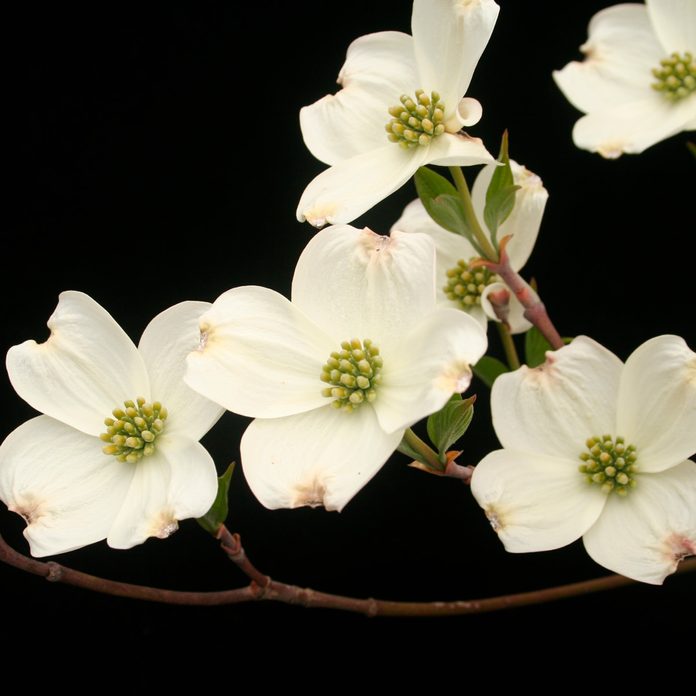
A Side of Tree
Adding a Japanese Dogwood Tree to your moon garden is another way to ensure flowering in the late summer and early fall. Pinching the flowers and pruning these trees allow you to control the timing of their bloom. Plant one off to the side of your lunar plot so that you don’t block any moonlight or obscure your shorter flowers. These alluring yet hardy trees can be grown in zones 4-9.
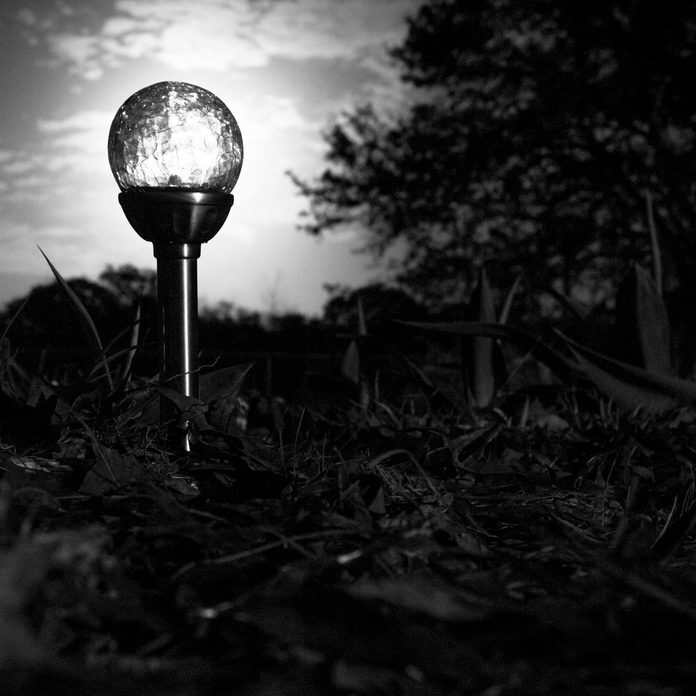
Moon in the Flowers
Accent your moon garden with outdoor decor that will enhance your enjoyment on the darkest of nights. Create a path within, or leading to, your moon garden with large white rocks. A series of solar light stakes can give you that subtle radiance needed during moonless nights. A reflective moon globe on a stand will give the impression of a simulated moon sitting among the flowers. Once complete, sit back and let the moon do the rest of the work.
